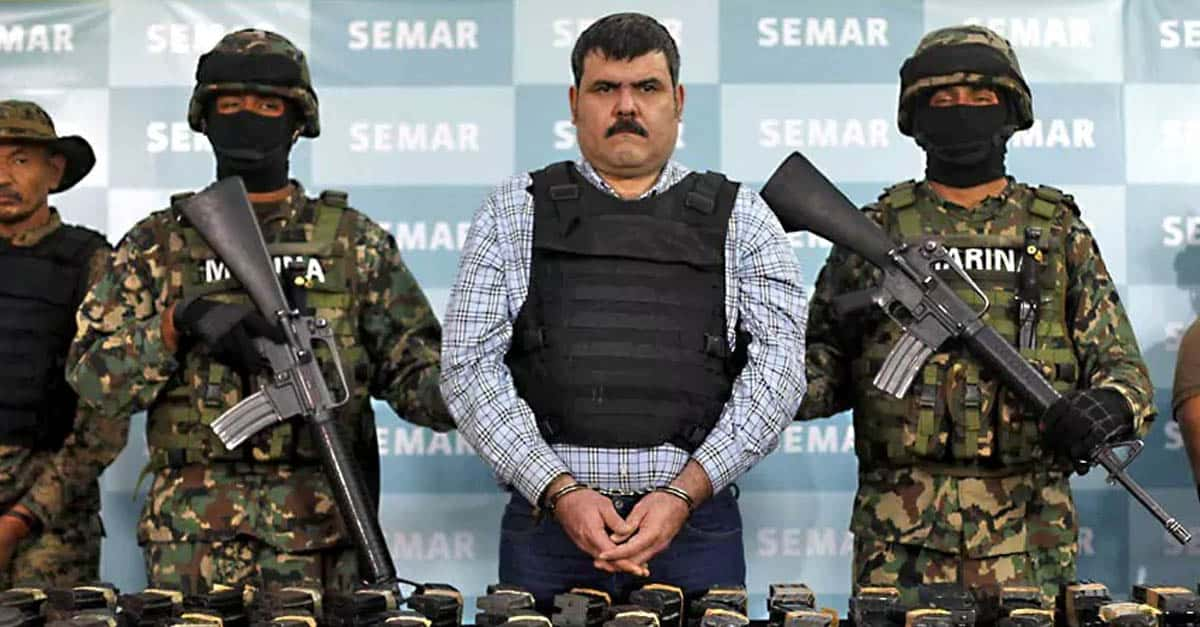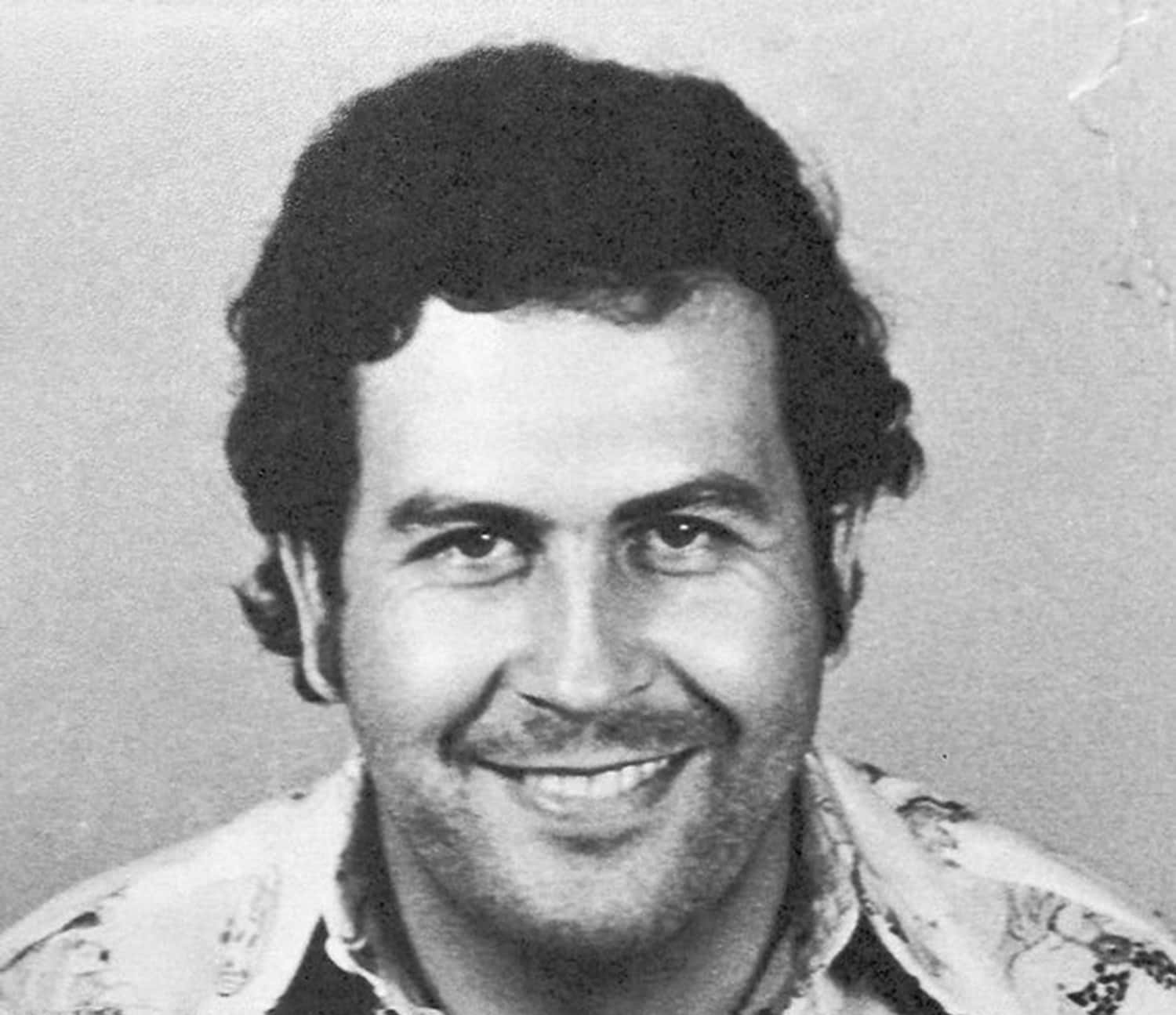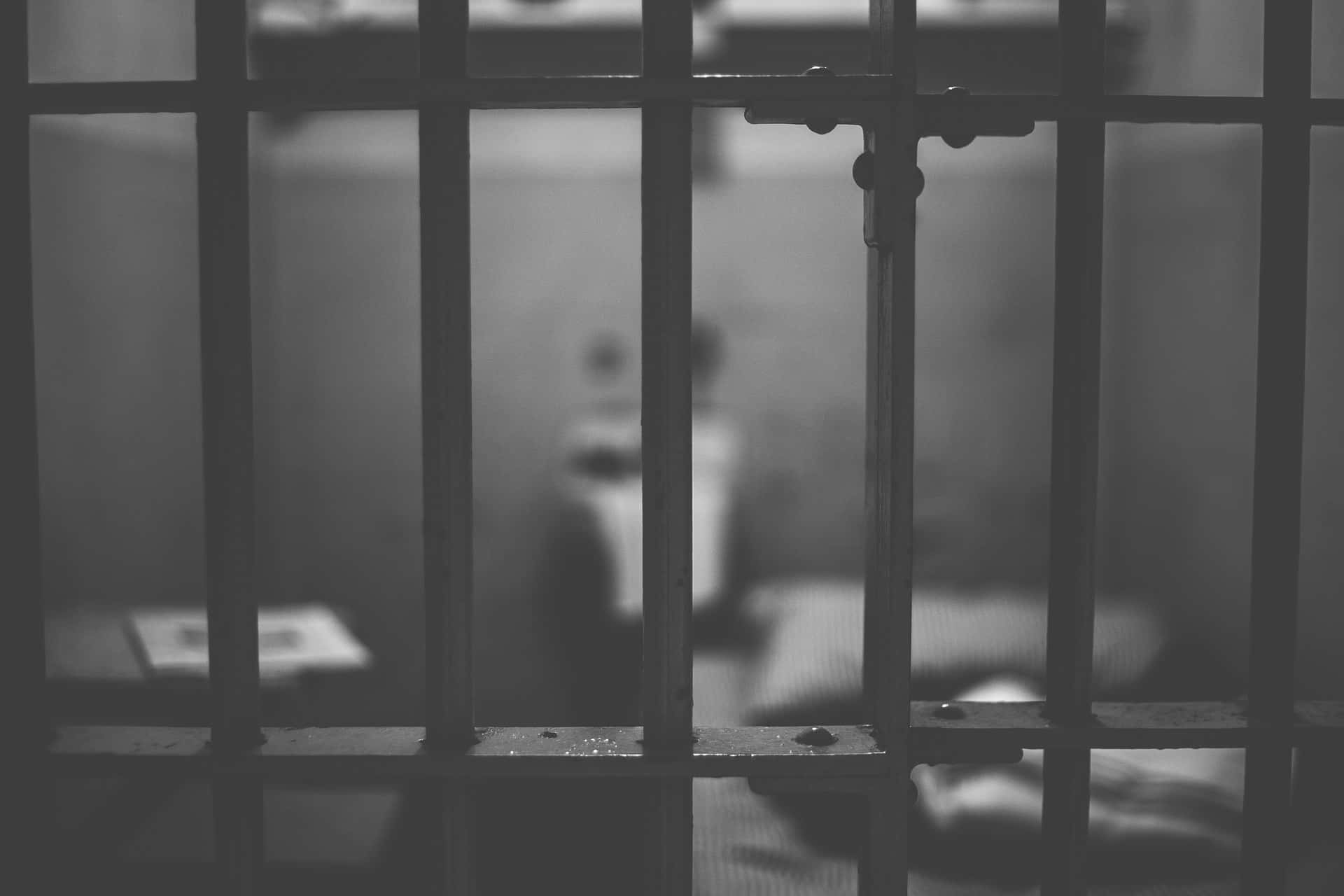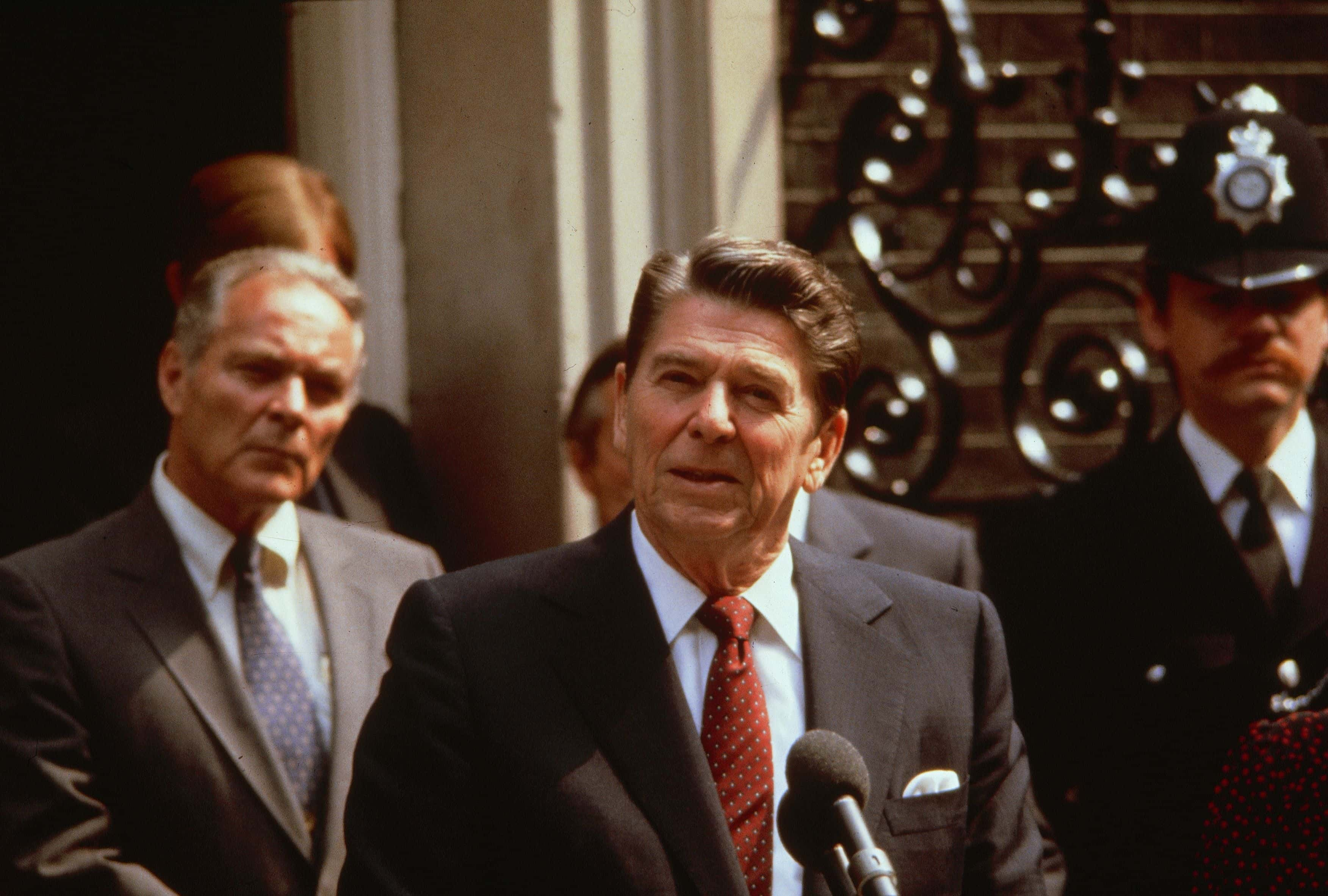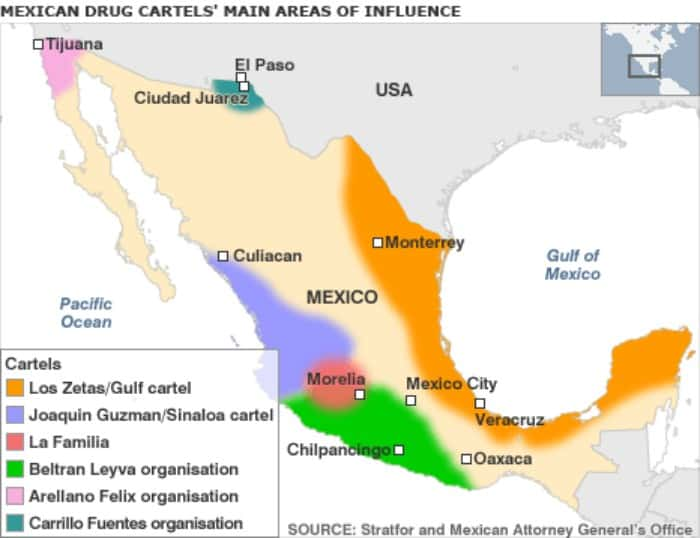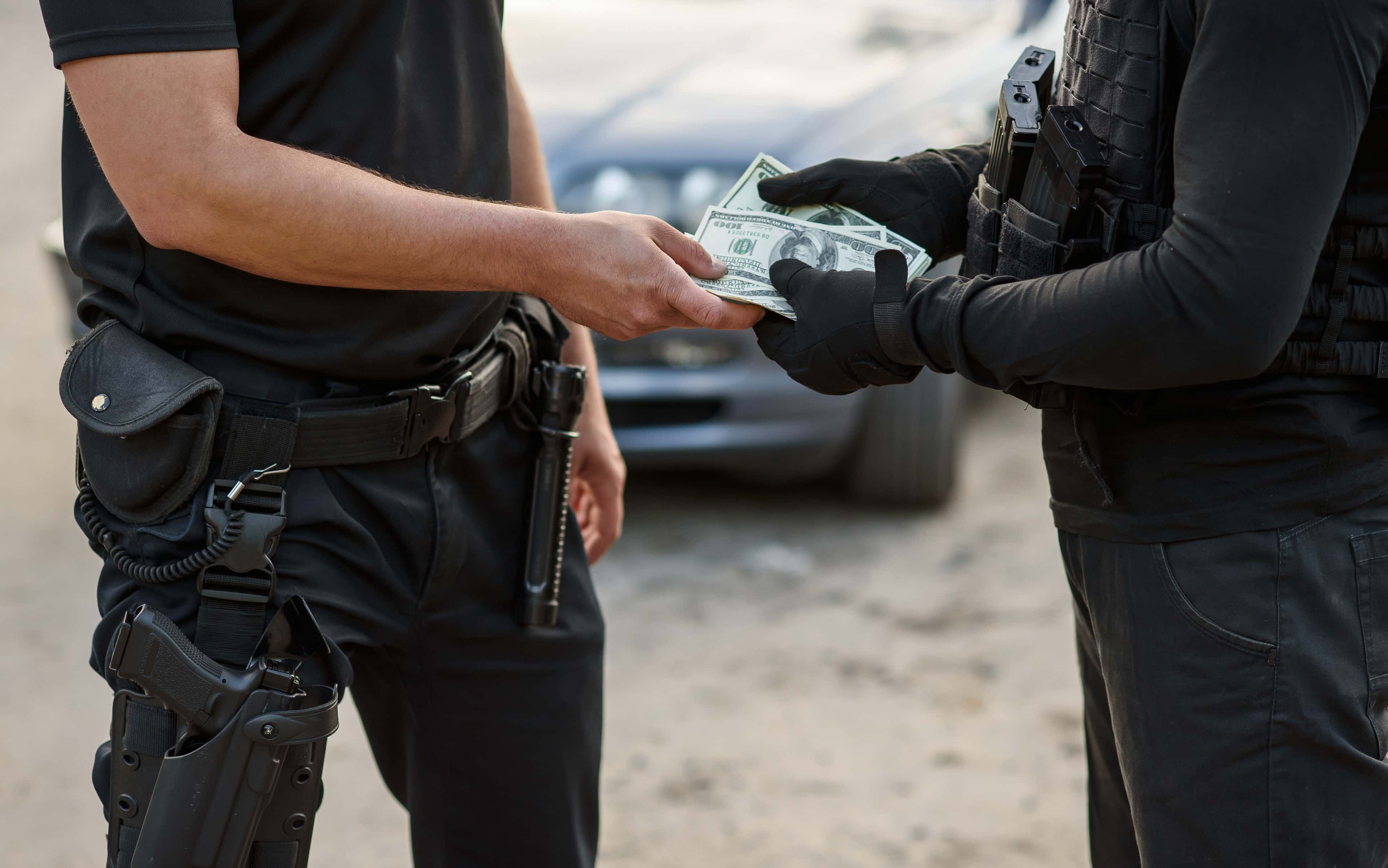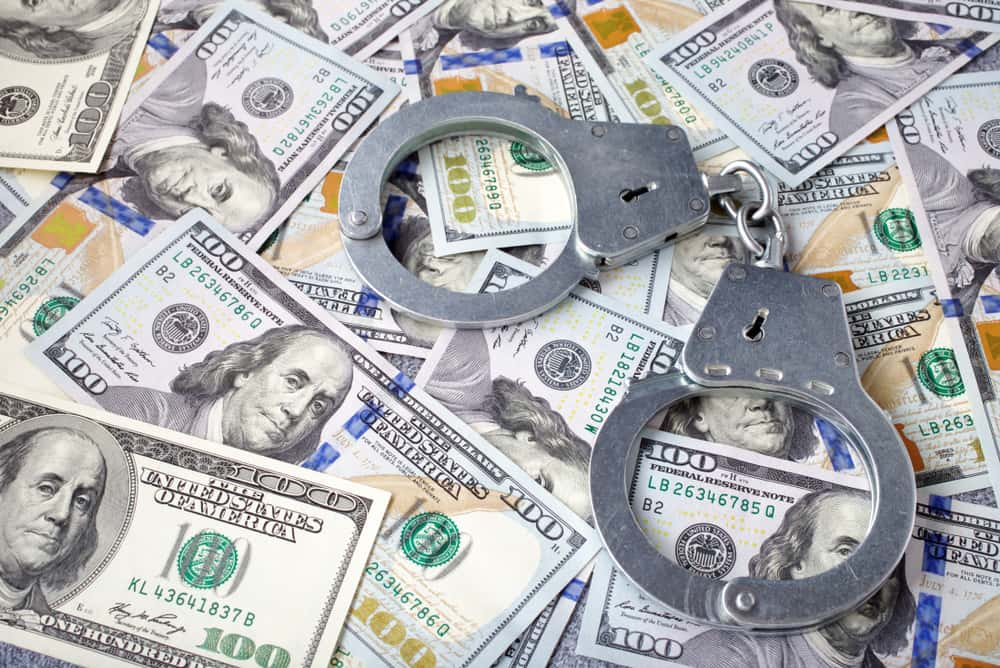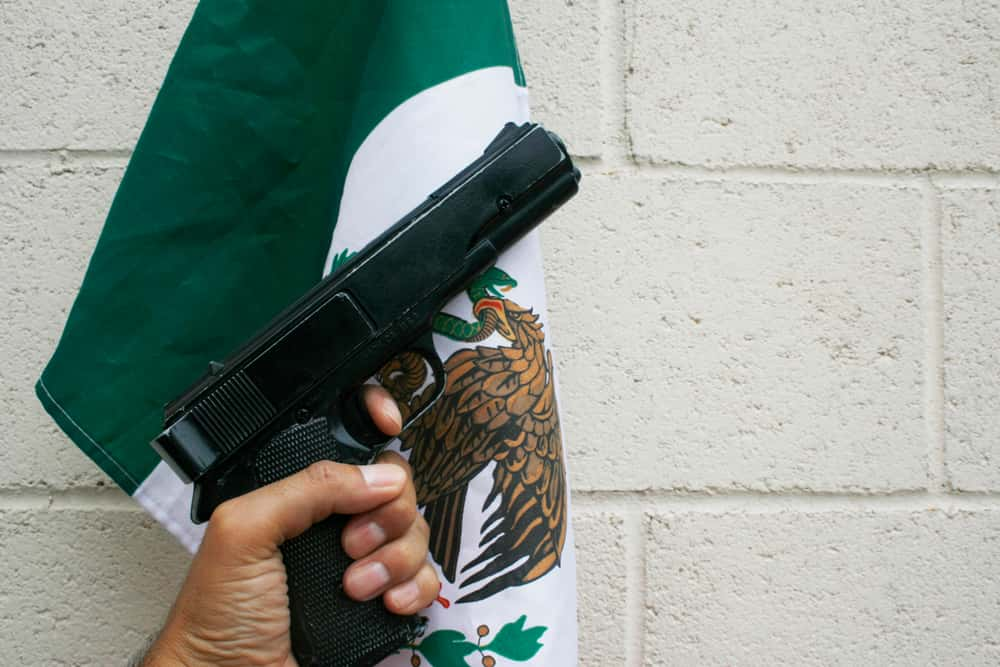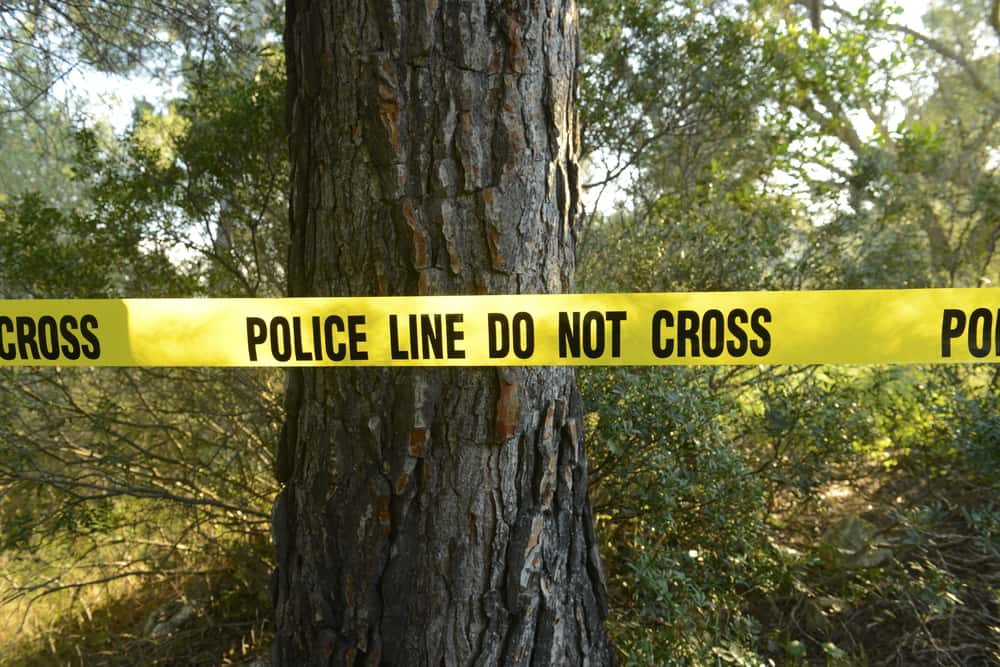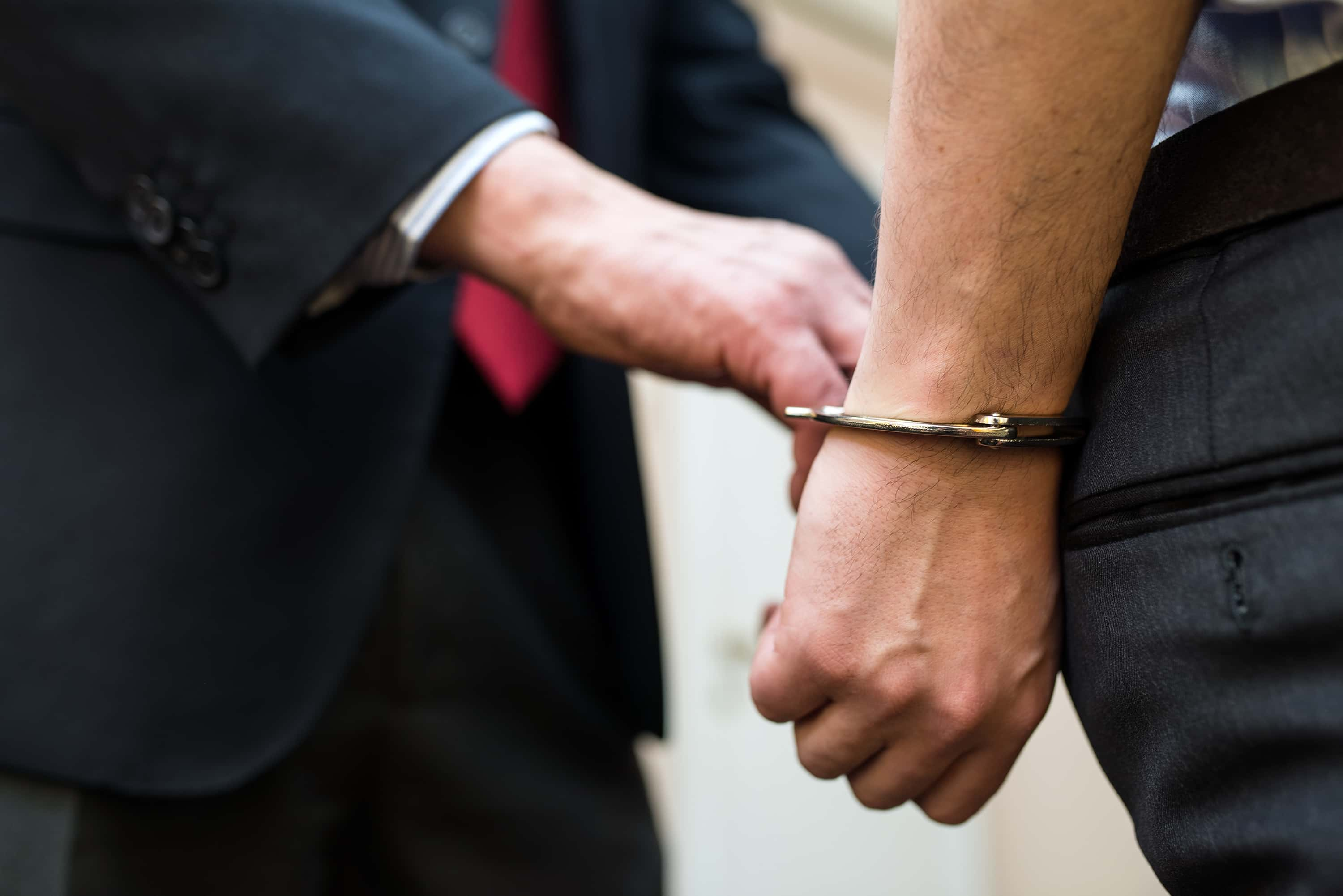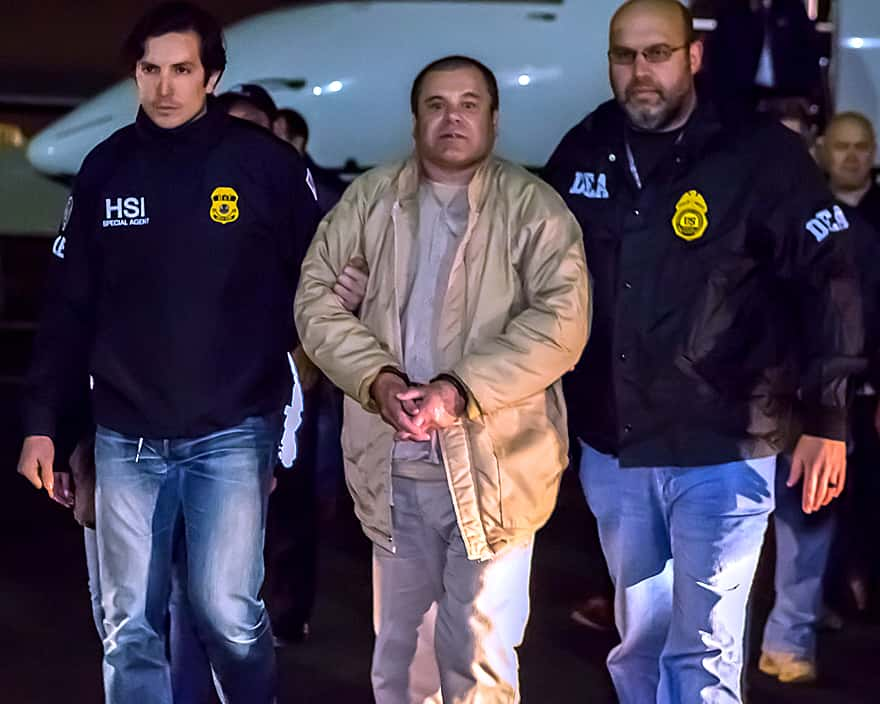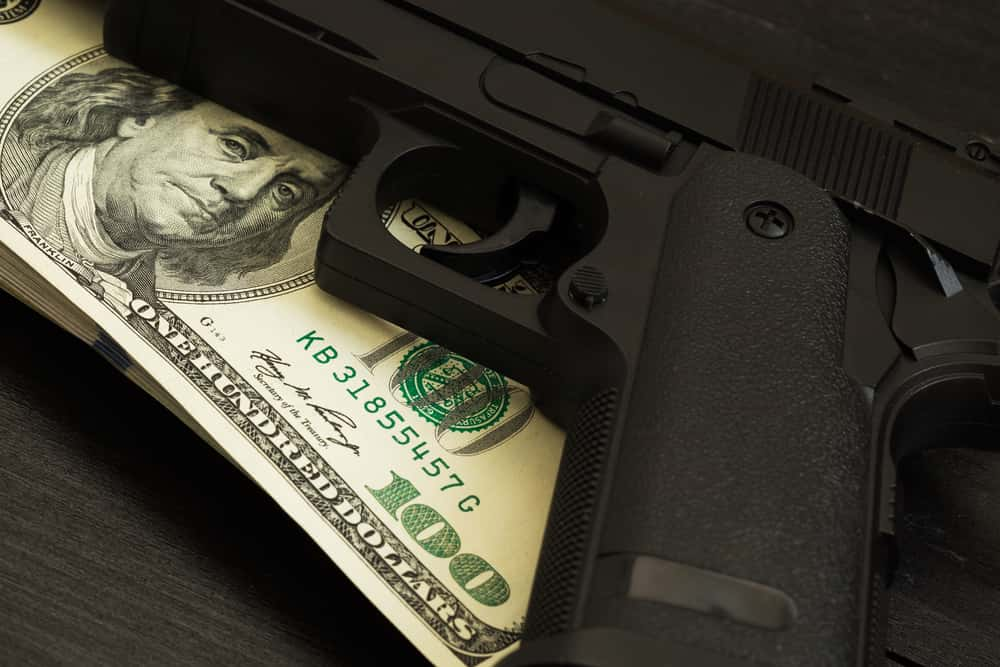In movies and on TV, drug smugglers are depicted as sophisticated criminal masterminds, romantic anti-heroes, and, of course, violent gangsters. Sometimes they are all three. But who they are, and how they make billions of dollars trafficking drugs from country to country, can prove even more complicated. Here are 42 facts about Latin American drug cartels.
42. Born in a Prison Cell
Carlos Lehder and George Jung met while they were cellmates at Danbury prison in Connecticut. Lehder had a connection with a Colombian drug dealer; Jung had experience as a pilot and smuggler. Together, they devised a plan to purchase drugs in Colombia and smuggle them into the United States, changing the way people buy drugs forever. Jung was later immortalized in the Johnny Depp film Blow.
41. Say Hello to My Little Friend
Lehder's Colombian friend led him to none other than Pablo Escobar, a major drug trafficker from the city of Medellin. Lehder and Jung gave Escobar an opportunity to expand his operation, and together the three began channeling drugs from Colombia to the United States via a tiny island in the Caribbean called Norman’s Cay. This was the birth of the Medellin cartel.
40. King Pin
Escobar became the undisputed king of Colombian drug lords. Throughout the 1980s, Escobar supplied 80% of the world’s cocaine, earning $420 million every week.
39. Our Biggest Client
With the help of Jung and Lehder, Escobar was dropping 15 tons of drugs on US soil every single day.
38. The Cali Cartel
Having seen the success of the Medellin cartel, two brothers from the city of Cali, Colombia kickstarted their own operation, and soon pushed Escobar for control of the US drug market. An agreement was reached, with the Medellin cartel focusing on Miami and the Cali cartel assuming control of New York City. The rivalry, however, was far from friendly. The Cali cartel even hired mercenaries to assassinate Escobar in 1989, and teamed with a paramilitary group that finally forced the Medellin Cartel to shut down in the 1990s. The Cali cartel may have won the war, but they too gradually lost power.
37. Interesting Idols
Medellin cartel boss Carlos Lehder loved John Lennon, and had a bronze statue of the former Beatle erected on his Colombian compound. He also loved Adolf Hitler and was a Holocaust denier; he planned to use his wealth and influence to establish a fascist government in Colombia. The head of this reich? Lehder himself, of course.
36. Legendary Newsman
According to George Jung, legendary CBS anchorman Walter Cronkite arrived on Norman’s Cay to report on the Medellin cartel. He was met by Carlos Lehder and a squad of armed guards who persuaded Cronkite to abandon the story. Cronkite went home empty handed.
35. Betrayal
As his wealth and power grew, Lehder’s behaviour grew increasingly erratic. Knowing he could no longer rely on Lehder, Escobar tipped off authorities to his whereabouts. Lehder was arrested, extradited to the United States, and sentenced to life without parole plus 135 years in prison. Lehder remains in prison today.
34. The War On Drugs
Colombian cartels had been smuggling drugs by air into the United States, and their success caused US president Ronald Reagan to declare his famous War on Drugs in 1986. However, increased American vigilance around airports only inspired the cartels to begin smuggling drugs by land through Mexico.

History's most fascinating stories and darkest secrets, delivered to your inbox daily.
33. The Guadalajara Cartel
Before long, Mexican smugglers were working for themselves. Convinced they could make more money without the Colombians, Miguel Ángel Félix Gallardo, Ernesto Fonseco Carillo, and Rafael Caro Quintera joined forces by 1984. Dubbed the Guadalajara Cartel by DEA officials, they quickly carved out 90% of the US drug market for themselves.
32. The Acapulco Summit
Following the arrests of their leaders, the remaining lieutenants of the Guadalajara Cartel met in Acapulco in 1989. At the meeting, territories where laid out and divided between them, leading to the birth of the Mexican cartels that control the drug trade today.
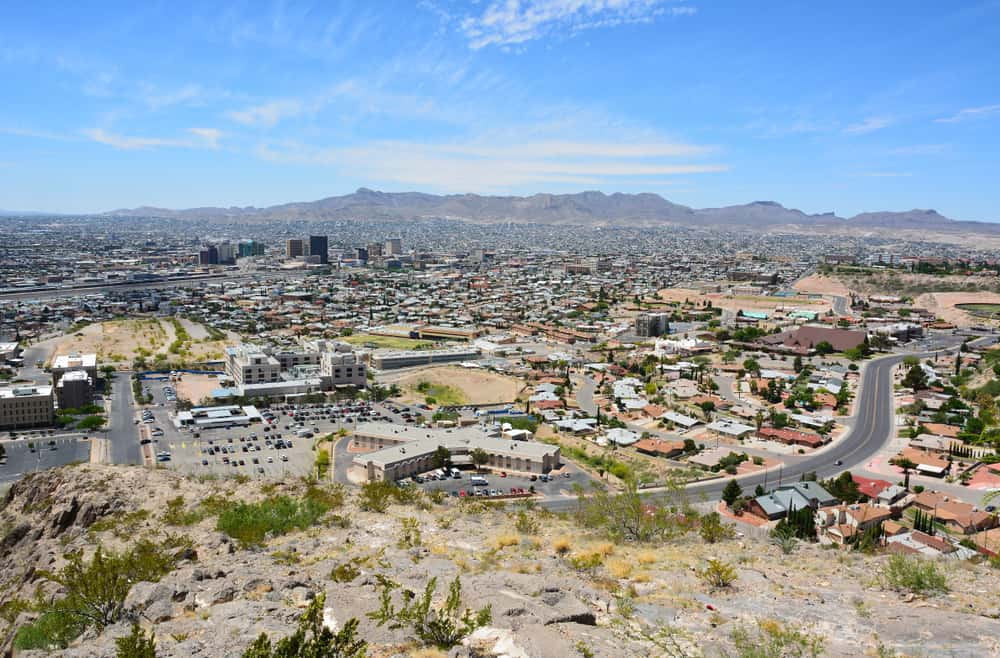 Shutterstock
Shutterstock
31. The Five Major Cartels
There are five major cartels in Mexico: Los Zetas, Beltran Leyva, the Gulf Cartel, the Juarez Cartel, and the Sinaloa Cartel.
30. Lucky Number Six?
A sixth Mexican cartel, La Familia Michoacana, may or may not be defunct–no one knows for certain. While police captured Jesus Mendez "The Monkey" Vargas, one of the heads of the cartel, in 2011, a raid in 2014 suggested La Familia Michoacana may be trying to regain their footing in the drug world.
29. Soldiers
Persuaded by the vast sums of money the cartels offer, members of the Mexican army are frequently recruited into the cartels. Los Zetas are especially tied to the military: Los Zetas was founded by elite soldiers from Mexico’s Grupo Aeromóvil de Fuerzas Especiales who worked as hitman for other cartels, broke off to form their own independent operation.
28. The Death of Escobar
Pablo Escobar was gunned down by police in 1993. On his birthday, members of an elite Colombian police force, put together for the express purpose of hunting Escobar, surrounded and stormed his safe house, chasing him onto a neighbouring roof. His reign as king of the drug lords came to a bloody end.
27. Staying Together For The Kids
With Escobar's death, the Colombian drug world was thrown into disarray. The remaining drug lords carved up the market into ever-smaller pieces, with some opting to focus on specializing in specific parts of the smuggling process. Eventually, the Colombian drug lords reached an agreement: In 2017, Medellin reported its lowest homicide rate in three decades.
26. London Calling
With a stable peace and the Mexican cartels seizing larger and larger portions of the US market, Colombian drug traffickers now focus on Europe and South America. They have joined forces with the Italian mafia to supply 11% of Europe’s cocaine.
25. Cartel Hotbed
Why is Mexico such a hotbed for drug cartels? Geography. The United States remains the world’s largest market for narcotics, with approximately $60 billion spent on illegal drugs every year. In 2010, Mexican President Felipe Calderone told CNN in Spanish, “We live next to the world's largest drug consumer, and all the world wants to sell them drugs through our door and our window."
24. Economic Incentives
Mexico’s close economic relationship with the United States gives the US significant influence over Mexico. Mexico’s ailing economy in the 1980s and 90s forced many Mexicans to turn to careers in drug trafficking while driving the Mexican government into debt to the United States. In an effort to lighten their debts, the Mexican government was forced to comply with US requests for combatting the drug trade.
23. NAFTA
Deregulation and loosening restrictions under the North American Free Trade Agreement made drug trafficking that much easier. Free trade between the US and Mexico increased cross-border traffic between the two nations—and thus increased opportunities to bring drugs across the border. Today, many Mexican factories and transport companies operate purely as fronts for the cartels.
22. CartelTube
Businesses depend on an internet presence, and drug cartels are no different. The cartels have taken to YouTube, posting videos which brag of their successes, or threaten rival cartels. Their videos even show cartel members executing rivals or law enforcement officials.
21. Immigration Promises
Mexican cooperation with the United States almost made Mexican immigration into the US easier. Mexican President Vincente Fox had worked with US president George W. Bush on a cooperative law enforcement program, which would see Mexican authorities comply with American demands in the War on Drugs. This included using Mexican armed forces instead of local police. In return, the US would offer citizenship to illegal immigrants already across the border. The attacks on September 11th, however, led to the retraction of the immigration plan.
20. Calling in the Army
Mexico had deployed its federal armed forces to fight the drug war despite it being unconstitutional to do so. Pressures from the US forced Mexico to rely on its standing army for drug enforcement, even as high-ranking military officers were frequently bribed by the cartels.
 Wikipedia, Master Sgt. Adam M. Stump, USAF
Wikipedia, Master Sgt. Adam M. Stump, USAF
19. Widespread Corruption
By 2006, municipal police forces in Mexico were considered so corrupt that 1/3 of all Mexican police were fired. The remaining 2/3 were suspended and replaced with federal forces. This did little to stem either the violence or the corruption.
18. Silver or Lead?
By some estimates, the Mexican cartels combine to spend $1 billion a year on bribes to local police alone. In the 1990s, their usual offer to politicians and law enforcement officials who got in their way became plata o plomo? –silver or lead?
17. The Mexican War On Drugs
The Mexican government, bowing to US pressure, began an aggressive crackdown on the drug cartels in 2006. In the first year of the drug war, 2,837 people were killed.
16. Death Toll
The war on the cartels continued to escalate and death tolls continued to swell, with 6,844 people killed in 2008, and 9,635 people killed in 2009.
15. The Heads of Honchos
These deaths included many leaders of the cartels, including Ignacio “Nacho” Coronel Villareal of the Sinaloa Cartel, and Pedro Roberto Velazquez Amador, the alleged leader of the Beltran Leyva.
14. El Chayo
Nazario Moreno Gonzalez, also known as El Chayo, was one of the founders of La Familia Michoacana. He was shot by authorities during an arrest in 2014.
13. Back From the Dead
Authorities had announced El Chayo’s death in 2010, which might cast doubt on El Chayo’s actual status today.
12. Shocking Comparison
Since 2006, more than 3,000 soldiers and police officers have died in Mexico’s drug war. That’s about the same number of coalition soldiers that have died during the Afghan War since 2001.
 Wikimedia Commons, Diego Fernández
Wikimedia Commons, Diego Fernández
11. Watch the Clock
Someone dies every half hour due to drug-related violence in Mexico. That's 17,520 deaths a year.
10. A Grizzly Discovery
In 2017, authorities discovered a mass grave containing over 250 skulls in Veracruz. Authorities presume the grizzly find is related to organized crime.
9. A Peaceful Country
Despite the ongoing drug-related violence, Mexico maintains a relatively low homicide rate. Statisticians estimate that half of all murders in Mexico are related to organized crime. Without these murders, Mexico’s homicide rate is far below that of other Latin American countries.
8. Arrests
With constant police pressure, it’s no wonder the cartel leaders frequently wind up in prison. In 2016, Alfredo Beltran Leyva, one of the heads of the Beltran Leyva cartel, was sentenced to life in prison for international conspiracy to traffic narcotics. This is one indicator that, slowly but surely, the war on drugs is working.
7. Folk Heroes
Despite the violence wrought by the cartel rivalries and wars with the police, the cartel leaders still attain status as folk heroes. An entire genre of folk music–narcocorridor–is devoted to celebrating the violent exploits of the drug lords.
6. Broadcast From The US
Because they are prohibited on Mexican radio, the narcocorridos are often broadcast into Mexico from powerful underground radio stations on the American side of the border. The DJs must be careful: playing a song that celebrates one particular cartel may result in violent reprisals from rival cartel soldiers. More than a dozen narcocorridor singers were killed between 2006 and 2008.
5. El Chapo
One of the most famous cartel leaders is Joaquin Guzman—although most know him by the name El Chapo. How famous? After El Chapo was arrested in 2014, Sean Penn traveled to Altiplano prison and interviewed him for Rolling Stone.
4. El Chapo's Escape
The following year, a routine check of the prison revealed an empty prison cell and a tunnel more than a mile long. El Chapo had escaped! He managed to evade authorities for the next three years, before being arrested and extradited to the US in 2017.
3. Escape Artist
This 2015 attempt was the third time El Chapo had escaped prison. In 1993, El Chapo paid a guard $3 million to let him waltz out the door. In 2001, he successfully eluded Mexican and US authorities for twelve years after hiding in a laundry cart and being wheeled out of the prison.
2. The Iron River
The United States is the largest supplier of illegal weapons to the Mexican cartels. The Iron River is term used to describe the steady flow of American-made weapons that are sold to the cartels in Mexico. Bowing to NRA pressure, the US government reluctantly lifted a ban on semi-automatic weapons manufacture in 2005, increasing the flow of arms. A 2013 University of San Diego report found that nationally, the illegal firearms trade with Mexico accounted for $127 million in annual revenue for the U.S. firearms industry, or 2.2 percent of all gun sales.
1. Big Business
The Mexican cartel brings in nearly $30 billion every year from US sales alone. It is believed El Chapo may have as many as 150,000 employees in the Sinaloa Cartel. That’s more than Google or Apple!

